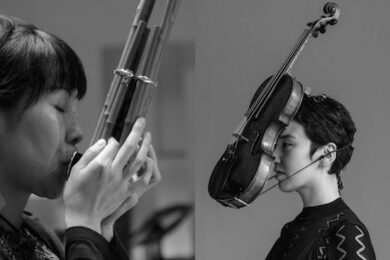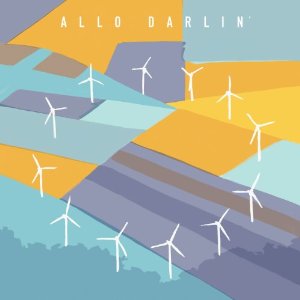In the white noise app on my phone, nestled among the gentle rain sounds, Japanese gardens and Gregorian chants, is an option to immerse yourself in the dulcet tones of a B-52 Flying Fortress. Combining radio chatter with propeller sounds, there’s no acknowledgment that this audio came from a machine designed to kill. It’s just another aid to tranquility, treated as no more innocuous than bird sounds or running water.
When, why and how white noise app developers decided users wanted to immerse themselves in the soothing drone of war machines isn’t clear. It’s like the fusion of mindfulness with some bizarre echo of that beauty in the machinery of battle once hymned by the Italian Futurist, Filippo Marinetti. But it shows that even the most unlikely sounds can be taken out of context and processed into a functional use. The presence of the B-52 sound is an exception that proves the rule. White noise apps are typically filled with sounds of organic life, geological phenomena, and musical traditions from outside of Europe (or at least, pastiches of them). They reflect wider trends about which sounds and settings have ideas of tranquility projected onto them as much as they project tranquility on to us. Certain sounds become easily digestible dead matter that’s convertible into white noise. But these sounds also tell other stories, trigger other feelings.
This is the space David Toop and Lawrence English’s The Shell That Speaks the Sea expands. The duo sieve a selection of eerie field recordings through lush yet dank electro-acoustic textures and human voices to create a spooky, troubling, soundscape. As English explains in the release notes, the record reflects the pair’s shared interest in sound from “the affective realm that haunts, rather than describes, experience.”
It’s worth pausing on this word, haunts, for a moment. Alongside its paranormal connotations, haunting also evokes persistence. A recurring of something ungraspable but resolutely present. A presence that can’t be quantified but affects the working of the mind and mood. What is it that recurs through this record? In their jumps from wildlife sounds to instrumentation, Toop and English track a mysterious and potentially sinister presence. Listen to this record alone in a dark room and things get very scary very quickly.
First track, ‘Abyssal Drift’, begins with a blanket of wildlife sounds. Among the chirps and clicks come harrowed calls of distant birds. Glistening percussion and strange ideophone tones weave through the mesh, bringing to mind the atmospheric sounds and effects created by the BBC Radiophonic Workshop more than a relaxing sound bath. From there it slips into scrunches which might be gravel mushed under foot, or an AM radio between stations.
‘Reading Bones’ opens with an almighty creak. The track is violently punctuated by the beating edge of something long and hard rushing through the air. A voice stutters and stumbles, entering a terrain somewhere between sound poem cut-up and a permanently frustrated incantation. This possessed sound world continues along its foreboding way, a flurry of chirrups eventually breaking through in a fashion that’s utterly disturbing – a jolting interjection rather than a soothing ambient texture. On ‘Whistling In The Dark’ a blast of distorted guitar acts as a monolithic slab of human interference. It’s disturbing and disturbed, not so much haunting as doom-heralding in the way it burns through the ghostly soundscape. Even the ebbing percussion and bamboo flurries of ‘The Tattooed Back’ or the Spanish guitar parts on ‘Long Night’ carry a brooding intensity.
The Shell That Speaks the Sea is, in a way, the conceptual inverse of reducing a Second World War aircraft into something that could sit alongside tranquil wildlife recordings. Toop and English take sound sources that might easily get sucked into the white noise industrial complex – bamboo, flutes, bird sounds, bowls and stones – and reanimate them, kicking them back into life and amplifying the complex emotional and psychic weight they contain. What’s typically thought of as light and airy becomes heavy and unnerving.
Birds are a recurring sound throughout, but they’re never inconsequential background noise. A sound that Toop and English share a fascination with, and which appears in the album, is the call of the Tawny Frogmouth. It has a peculiar voice, to my ears, sounding strangely like the pulsing bleep of an analogue synthesizer. I’m not alone, English himself (in the album’s press releases) compares it to a modulating low-frequency oscillator. A natural sound, it’s also one that can’t escape having a fragment of ourselves imprinted on it.
The Shell That Speaks the Sea sits alongside other artists who’ve recently taken field recordings and found sounds as a launch point into spooky terrains. Serbian composer Manja Ristić’s water memory – mnemosonics topographies of the Adriatic, released earlier this year, mixes hydrophone recordings of aquatic noise pollution with sounds captured at sites ranging from disused quarries to former Yugoslavian military bases. Richly detailed and intricately textured, Ristić’s works are often also imbued with a gloomy, somber weight. Electrical hums roll through melancholic instrumentation on an equal footing with more organic or geologically originating sounds. Ristić doesn’t hold the natural world up as some pristine, detached ideal there to be empirically documented or ready to be absorbed into background listening, but a contested, volatile zone endlessly warped by human action.
More song-based but no less spectral is Polish artist Martyna Basta’s Slowly Forgetting, Barely Remembering. Basta’s voice flitters between simmering melodies and eerie vocalisations, tumbling through a palette of chiming bells and twitching environmental sounds. Like Ristic, and Toop & English, she outlines something creepy in a lush sound world. A glowing apparition unsettling yet perhaps reassuring in its persistence. For all these artists, field recording and loosely new-age adjacent sounds form part of a broader process equal parts poetic and investigative. Beyond their shared doomy gravity is an amplification of background sounds burdened with complex resonances beyond being hollow sources for white noise.
Can field recording ever be objective, a neutral capturing of sounds? While The Shell That Speaks The Sea originated in a series of field recordings, Toop and English seem acutely aware that no field recordist exists in a vacuum. From where the mic is placed to what is decided worthy of capturing, a host of influences decide what is recorded and how. Part of that can be an aesthetic consideration – does it fit the parameters of what’s considered beautiful, or in the case of white noise, tranquil? Toop and English bypass the question of authenticity and accuracy to explore something far more potent on The Shell That Speaks The Sea. Through the recorded and composed sounds they deploy, they map what sounds project onto us, and what we project onto them.








